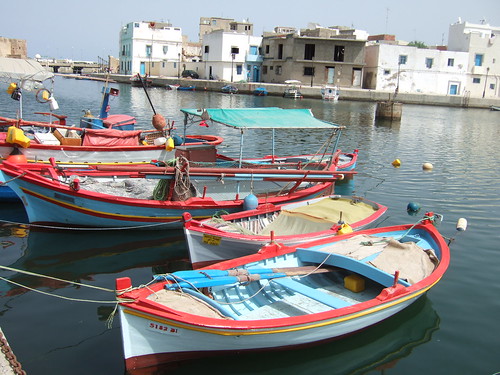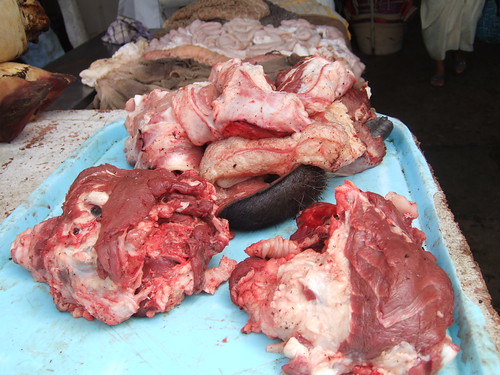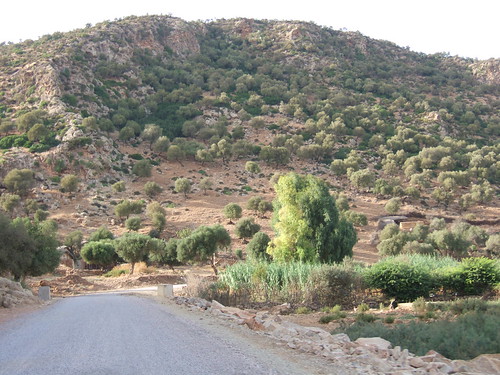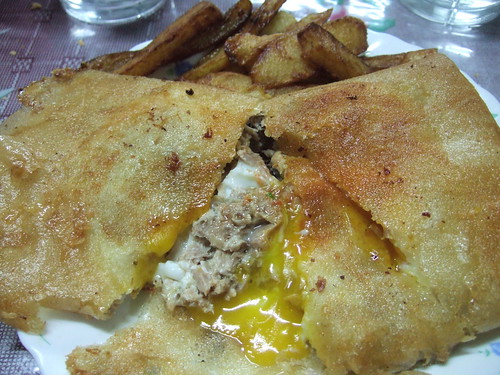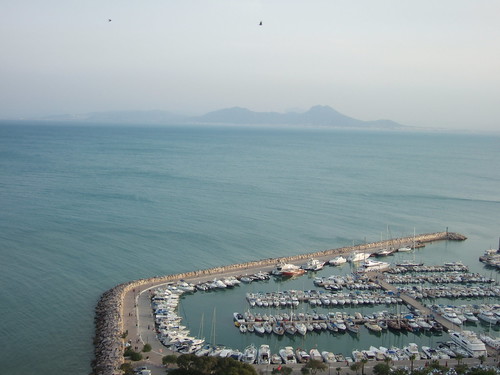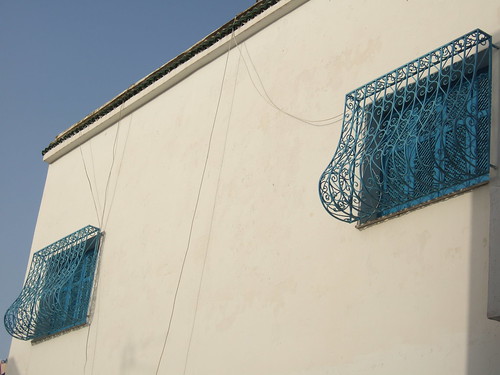We had a long way to go to Tozeur via Gafsa, so we woke up early to start our drive to Kasserine. The rolling hills switched to empty lots of cacti. As our surroundings started to become flat, more and more locals started to hitch a ride to the nearby towns. We saw an older man in a long purple tunic on the side of the road, trying to wave down cars. I joked to the Dr. that we should pick him up to buy some good karma. To my surprise, he stopped the car on the side of the road. I was squealing before he rolled down the windows on my side! The old man didn’t speak French, but we all understood “Kasserine” and he got on the back seat. It was a quiet and awkward ride for the next fifteen miles because he only spoke Arabic, but he managed a faint “Monsieur” to let us know he wanted to get out as soon as we drove by the city center.
During Ramadan, some stores remain open for business. We found out fresh bread was easy to come by during the day, as well as fruits and drinks. In Gafsa, we stopped by the only open patisserie and ordered four pieces of small, triangle pastries. They were wrapped in phyllo and filled with almonds and pine nuts. They were not serving tea, so the lady refused our payment when we finished. We were simply tourists passing by her town, but we were shown such great hospitality. Picking up the old man wasn’t so bad after all. (When the Dr. bought water from another store, the man tending the place asked him what a guy “like him” was doing in the middle of Gafsa.)
We were on our way toward the desert. The roads started to become drier and dustier. We started to see road signs warning us of camels crossing. We initially thought that they were just a ploy to entertain tourists, but we laughed as soon as we caught our first glimpse of camels far away, just chilling on the side of the highway.
In Tozeur, we drove in circles before we found Residence el-Arich. We checked in our airy and tiled room that looked out to a courtyard filled with palm trees. We missed the sunset from the Belvedere Rocks because we also couldn’t the right turn. The cop stationed outside the zone touristique recognized our car by the time we circled a third time. We made it to Belvedere Rocks as soon as the sun disappeared behind the horizon. The rocks were ugly anyway as the most recent landscaping included a golf course and a playground. The face of Tunisia’s most revered poet, Abdulkacem Chebbi, was cut into the rocks. (My first reaction? “That better not be John Fucking Kennedy!” I have nothing against him, of course, but I didn’t come all the way to Tunisia to see an American’s face etched in sandstone.)
Right outside the souq, or market, of Tozeur, we found Restaurant Paradis where we had a nice dinner of couscous with lamb, a cucumber salad and ragout of green peas, all for 13 dinars. An old man ran the place and he offered to move the table and chairs outside so we can enjoy the nighttime breeze. We ate heartily as we watched the men go in and out of the mosque next door.
On our way home, our favorite cop flagged us to stop. When driving in Tunisia, there are several roundabouts and police inspections on the road. As driving tourists, we have enjoyed the privilege of simply driving slowly past the cop, waving and continuing on without having to go through the inconvenient inspections all locals treat as routine. When we were signaled to stop our car, we got a little bit nervous. The cop walked over to the Dr.’s side and handed us a date. He stopped us to give us a date! He also kept us for the next twenty minutes, excitedly chatting about Tozeur’s palmeraie–where the date came from–and the Dr.’s ability to speak perfect French even though he is “clearly” Japanese.
Inspired by the date, we visited the palmeraie the next morning, Tunisia’s second largest with at least 200,000 trees. It was an amazing sight to see clumps of trees in the middle of the desert. It’s a great example of tiered oasis agriculture where the system is watered by more than two hundred springs that produce more than 60 million liters of water a day. The best way to explore it is on foot, so that one can go through the narrow paths along the irrigation canals, but we had to be packed up by 9am. We were off to the Sahara, where we would be needing all the water we could get.
Related post/s:
Day 4 in Tunisia: Kasserine and Gafsa photos on Flickr
Day 4 in Tunisia: Tozeur photos on Flickr
Day 3: Tabarka to Bulla Regia to Le Kef, Tunisia






